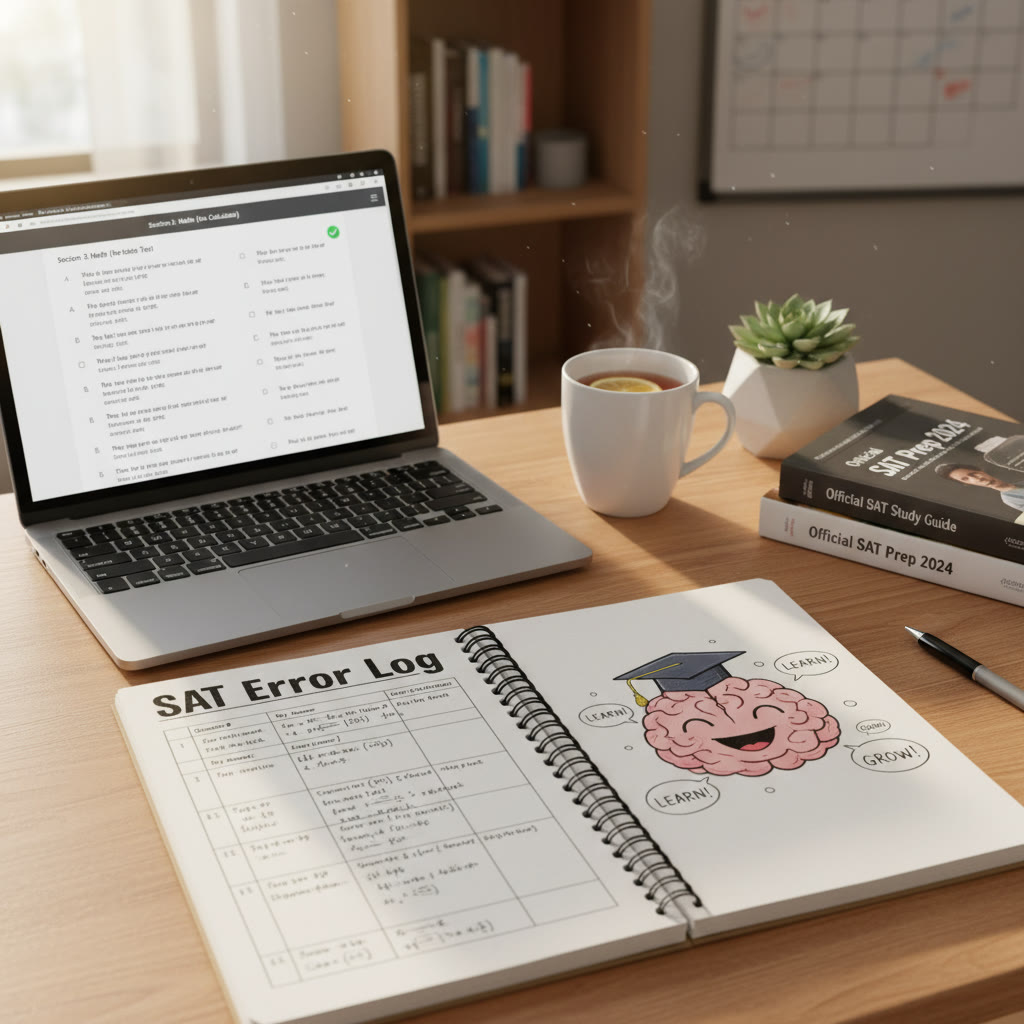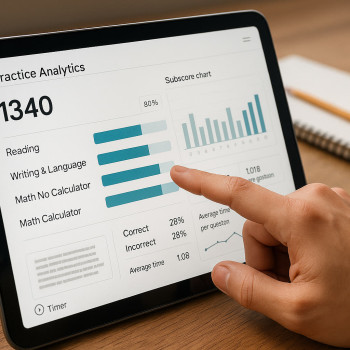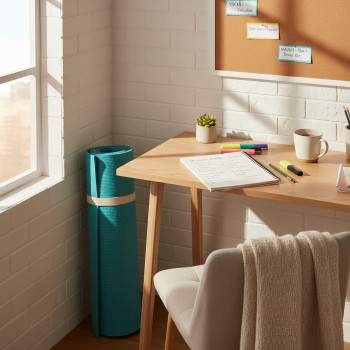The Academic Habits That Correlate With Higher SAT Scores
Ask any top scorer how they prepared and you’ll usually hear similar themes: steady practice, targeted review, and smart planning. High SAT scores rarely come from last-minute cramming or frantic note-copying. They grow from habits—small, repeatable actions that change the way you think, learn, and perform under pressure.
Why habits matter more than hacks
Shortcuts feel great. A “hack” promises instant results: memorize a list, skip a step, follow a single trick and “beat” the test. Those tricks can give a tiny boost for a specific question type, but they rarely build the underlying skills the SAT measures: reading comprehension, analytical reasoning, algebraic fluency, and clear writing. Habits, on the other hand, reshape your cognitive toolkit.
Think of habits as small deposits into a savings account. Each session of reading, math practice, or review compounds. Over weeks and months these deposits pay dividends in speed, confidence, and reliability—the real currency of standardized tests.
How to read these habits
Below I’ll walk through the academic habits that correlate with higher SAT scores, explain why each habit works, and give practical examples you can use starting today. You’ll also find a table that summarizes what each habit targets and a few real-world student stories to make the ideas stick.
Core Habits That Predict Strong SAT Performance
1. Consistent, spaced practice
Consistency beats intensity. Students who study for 30–60 minutes most days tend to outperform those who do a single 8-hour cram session. Why? Spaced practice—studying material repeatedly over time—helps memory consolidation and prevents the forgetting curve from erasing what you learned.
Practical habit: schedule five 45-minute sessions each week instead of one eight-hour marathon. Rotate reading passages, problem sets, and grammar drills across those sessions to keep exposure broad and retrieval frequent.
2. Active recall and self-testing
Reading notes is comforting but passive. Active recall—forcing your brain to retrieve information—strengthens memory and reveals gaps. Self-testing also mirrors the test’s demands: you must produce answers, not just recognize them.
Examples of active recall:
- After a reading passage, close the book and summarize the author’s central claim aloud.
- On math problems, first try to solve without looking at worked examples; then compare methods.
- Create flashcards for vocabulary, formulas, and commonly confused grammar rules and test yourself weekly.
3. Deliberate practice with feedback
Not all practice is created equal. Deliberate practice focuses on weaknesses with immediate feedback, so you correct mistakes and refine strategies. It’s better to spend a focused session on algebraic manipulation you consistently get wrong than to casually do fifty mixed problems without analyzing errors.
How to implement it:
- Identify a recurring mistake pattern—like misreading function notation—and isolate problems of that type.
- Do a set of 10–15 problems, track error types, and end the session by writing a one-sentence rule to avoid that error next time.
4. Regular full-length practice tests with reflection
Practice tests do more than measure progress; they train pacing, stamina, and emotional control. But the test itself is only half the benefit—the other half is careful review. High scorers spend as much time analyzing wrong answers as they do taking the test.
Reflection routine:
- After each practice test, categorize every incorrect answer: careless, concept gap, timing, or misapplication of a strategy.
- Make a short checklist for the next test: e.g., “double-check diagram labels” or “spend no more than 1 minute on an impossible question in Reading.”
5. Targeted reading habits
The SAT Reading section rewards speed and depth. Students who read widely—editorials, science writing, historical essays—develop familiarity with complex sentence structures and rhetorical moves. But deliberate reading beats aimless scrolling.
Try this focused reading practice:
- Choose a short editorial or science paragraph. Underline the topic sentence and the author’s tone (skeptical, admiring, neutral).
- Write a 15–20 word summary that captures the author’s main claim and supporting reason.
- Log the passage type (literary, historical, social science, or natural science) so you rotate exposure across types.
6. Concept-blocked math practice
When you practice math by topic—algebra one day, functions the next—you reinforce patterns and procedural fluency. Mixing topics is useful later for simulating the test, but early on, blocking lets you build competence quickly.
Suggested cycle:
- Week 1: Linear equations and systems.
- Week 2: Functions and modeling.
- Week 3: Geometry and coordinate geometry.
- Week 4: Mixed review and timed sets.
7. Error analysis and learning logs
One of the most underrated habits is keeping an error log. Write down each incorrect problem, why you missed it, and the explicit rule or method that would prevent it next time. Over time, patterns emerge—maybe you often misinterpret conditionals in logic or forget to distribute negatives.
How to keep a simple learning log:
- Column 1: Question type (Reading detail, Algebra, Command of Evidence, etc.).
- Column 2: Mistake reason (careless, concept, time pressure).
- Column 3: Action plan (review formula, practice 10 similar problems, set time checkpoint).
Putting Habits into a Weekly Plan
Habits stick when they are embedded into routines. Here’s a seven-day template that blends the key habits above into a manageable schedule. Think of it as a starting framework you can tailor to your life, classes, and deadlines.
Sample weekly schedule
- Monday: 45 minutes—Reading practice (active summaries + 2 practice passages)
- Tuesday: 45 minutes—Math concept block (targeted set + error log)
- Wednesday: 45 minutes—Vocabulary + grammar drills (active recall)
- Thursday: 60 minutes—Mixed timed practice (simulate section timing)
- Friday: 45 minutes—Full review of this week’s errors; update learning log
- Saturday: 3–4 hours—Full-length practice test (alternate weekends)
- Sunday: Rest lightly or review flashcards—short, low-pressure engagement
Example: Maya’s three-month transformation
Maya started with inconsistent study and a lot of frustration. She switched to 45-minute sessions five times a week focused on active recall and error logs. After three months of consistent, deliberate practice and weekly full-length tests with careful reflection, Maya moved from a practice score in the low 1200s to the mid-1400s. The change wasn’t magic—she shifted habits: spacing study, targeting weaknesses, and learning to review mistakes.
How These Habits Work: The Science in Plain Language
Educational research and cognitive psychology support the habits above. Two core mechanisms explain why they work:
- Spaced repetition strengthens memory traces and prevents rapid forgetting.
- Retrieval practice (active recall) makes retrieval pathways stronger, so you access information faster on test day.
Combine these with deliberate practice—focusing on weak points with feedback—and you’re shaping not just what you know, but how reliably you retrieve and apply it under time pressure.
Table: Habits, What They Target, and Typical Benefit
| Habit | Primary Target | Typical Benefit (illustrative) |
|---|---|---|
| Spaced practice | Long-term retention | Fewer forgotten rules on test day; improved performance across sections |
| Active recall | Reliable retrieval | Faster problem solving; fewer second-guess errors |
| Deliberate practice + feedback | Weak-skill remediation | Reduced recurring mistakes; focused score gains in target areas |
| Regular full practice tests | Pacing, stamina, strategy | Better time management and fewer late-test errors |
| Error logs | Mistake pattern recognition | Faster correction of recurring errors; efficient study sessions |
Common Roadblocks and How to Fix Them
“I don’t have time.”
Time is rarely the real issue—priority is. Short, consistent sessions beat sporadic long sessions. Replace a half-hour of passive scrolling with focused study three times a week and you’ll see returns. Use commute time for quick flashcards or listen to spoken passages to build comprehension on the go.
“I don’t know what to practice.”
The error log solves this elegantly. Let your mistakes direct your practice. If algebra questions are your Achilles’ heel, block a week to rebuild those fundamentals before returning to mixed practice.
“I get discouraged after a bad practice test.”
Bad scores are data, not destiny. Treat any test as a diagnostic tool. Spend more time on analysis than on the score itself. Identify two concrete improvements for the next test and celebrate those small wins.
How Personalized Tutoring Fits In
Some habits are easier to build with guidance. A tutor or coach can speed up the feedback loop, help design a tailored study plan, and offer targeted explanations when a concept refuses to click. That’s where Sparkl’s personalized tutoring can fit naturally into a preparation plan.
When it’s done well, tutoring provides:
- 1-on-1 guidance to isolate and address your specific weaknesses.
- Tailored study plans that fit your strengths, schedule, and goals.
- Expert tutors who model problem-solving and provide immediate corrective feedback.
- AI-driven insights that highlight persistent error patterns and recommend targeted practice—helpful for students who want data-backed direction.
Think of tutoring as a way to accelerate habit formation: it shortens the time between making a mistake and getting the precise instruction you need to fix it. If you prefer independent study, apply the same principles—frequent feedback, focused cycles, and consistent review—but a coach can make that cycle faster and less frustrating.
Practical Tools to Maintain Habits
Building habits is easier with scaffolding. These tools aren’t magical, but they help create structure and accountability.
- A simple planner or digital calendar to block study sessions.
- A dedicated notebook or spreadsheet for an error log and reflection notes.
- Timed practice sections to train pacing and reduce timing anxiety.
- Accountability partners or study groups for occasional check-ins—ideally with peers who have similar goals.
Final Tips: Small Changes That Yield Big Results
- Start each session with a clear objective: not “study math” but “master negative distribution with fractions”.
- End each session with a 3-minute summary: what you did, what you learned, and one action for next time.
- Keep sleep, nutrition, and movement part of your routine—cognitive performance is biological too.
- Celebrate small wins. Progress compounds; a 5% weekly improvement compounds quickly over months.


Parting Thought
The SAT is a standardized measure, but the path to doing well on it is deeply personal. Two students with similar raw ability can have very different outcomes depending on their habits. Adopt practices that encourage steady growth—spaced study, active recall, deliberate practice, thoughtful reflection—and you give yourself the best shot at translating ability into score.
Whether you build these habits on your own, adapt them to a busy schedule, or accelerate progress with personalized tutoring like Sparkl’s targeted guidance, the principle is the same: small, well-chosen actions done consistently lead to big improvements. Start with one habit this week—maybe a short error log or a scheduled 45-minute reading session—and watch how the compound effect changes your preparation over time.
Good luck. Study smart, stay curious, and let your habits carry you across the finish line.


















No Comments
Leave a comment Cancel